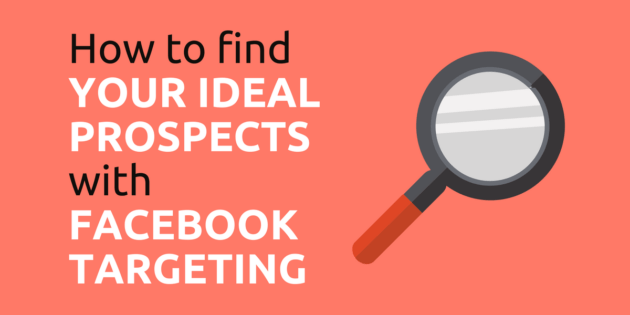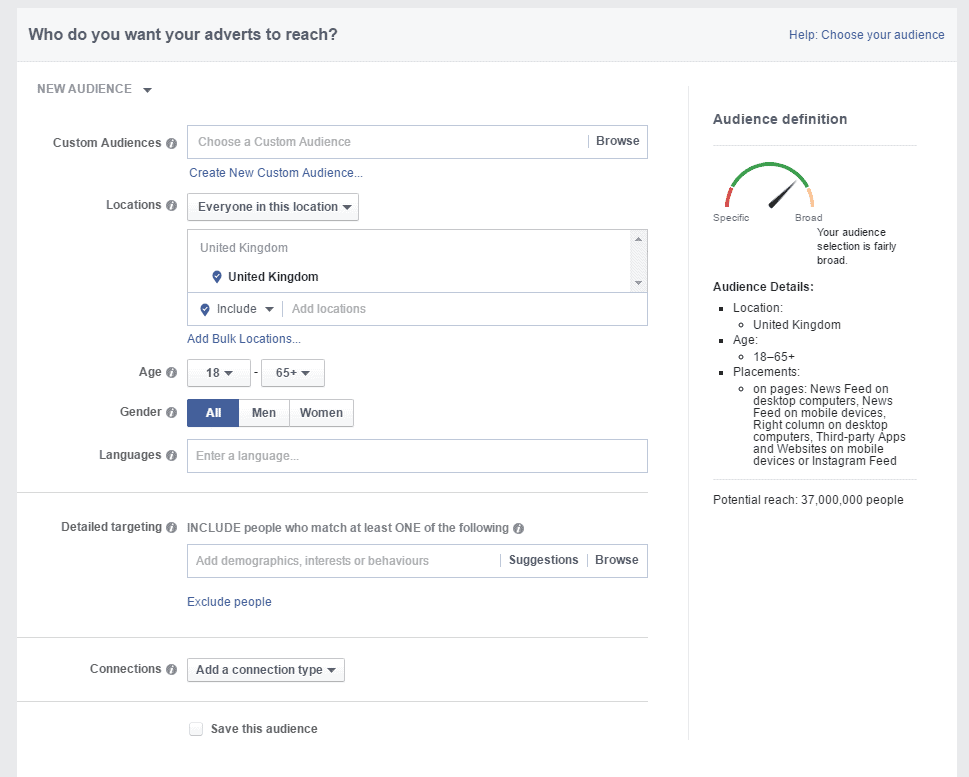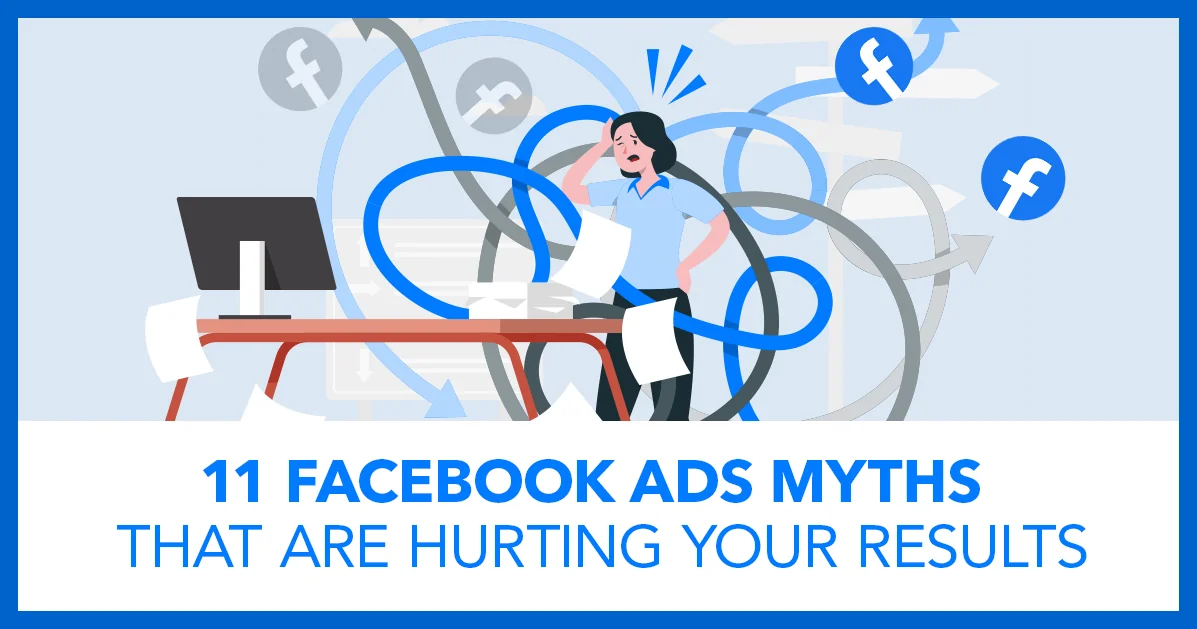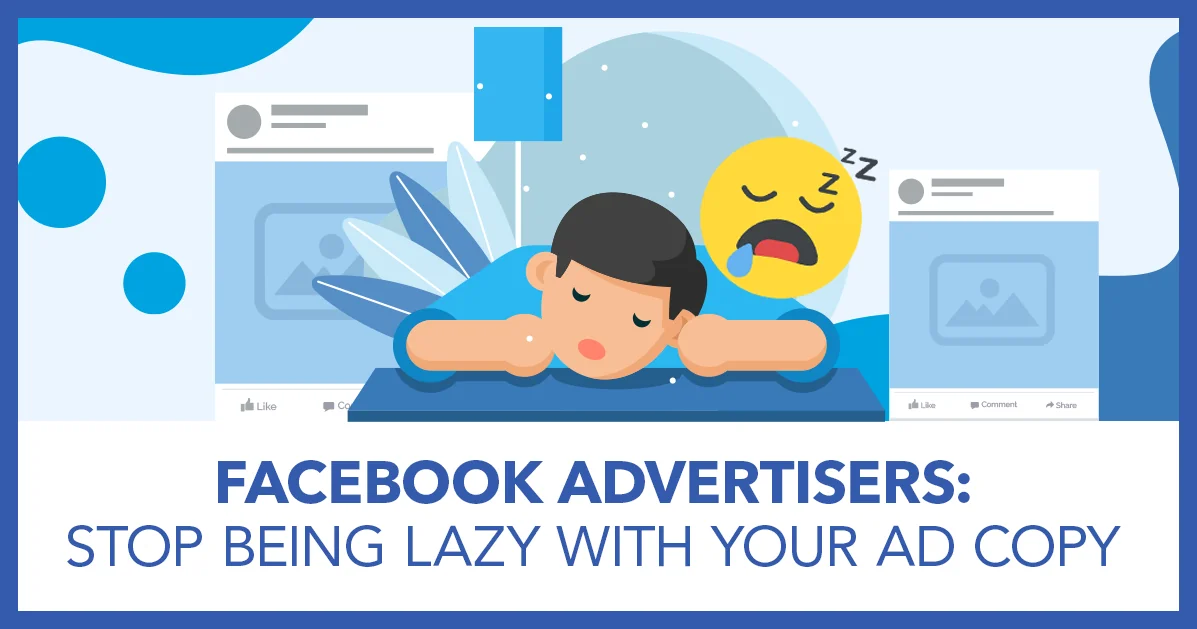
How to Find Your Ideal Prospects with Facebook Targeting
There are a lot of misconceptions around Facebook Advertising.
This is probably the most common…
“People don’t use Facebook to find products and services, they use it to socialise.”
Well that’s true…
But it doesn’t mean they won’t buy products and services based on ads they’ve seen on Facebook.
It’s the same as TV advertising.
Not many people watch TV to buy products and services, yet those ads definitely have an affect on all of us.
Everyone says that they don’t want to be advertised to.
But what they really mean is they don’t want to be shown ads for products and services they aren’t interested in.
I love movies and as a result I really enjoy the trailers at the cinema.
We’re a purely B2B company and we do a lot of successful advertising on Facebook.
Right now there are over 30 million Facebook users in the UK alone and 2.2 billion worldwide.
No matter what industry you’re in, B2B or B2C, you can find your ideal customers with Facebook targeting.
You just need to know how to find them…
And that’s what this article is all about.
Demographics Targeting
First of all we have Facebook’s demographic and location targeting:
This is fairly straight forward and you probably already know where the majority of your ideal prospects live and what age and gender they are.
But you need to be far more specific than just selecting location, age and gender.
There’s a 2nd tier of demographic targeting that you can and should use.
Here’s a list of questions we go through:
- What’s their education level? (school, college, etc.)
- What’s their job title? (lawyer, dentist, etc.)
- What industry do they work in? (retail, finance, entertainment, etc.)
- What’s their annual income? (£50-£75k, £75k+, etc.)
- Are they a home owner or a tenant?
- What’s their family and relationship status? (single, married, parent, etc.)
- Life events? (newly-wed, new job, moved house etc.)
Of course, not all of the above will apply to your business and you definitely don’t want to use all of them.
Using just one of the above may be perfect for you.
We’ve found the audience sizes that get the best results are 250k-3m.
But if you’re a local business then don’t worry about that.
If you can’t reach your ideal prospects through demographic targeting alone (most of you) then you should move onto interest targeting.
Interest Targeting
With Facebook’s interest targeting you can really go down the rabbit hole.
Literally…
You can even advertise to people that are interested in rabbits…
And there are 1.5 million of them in the UK!
If your company produces rabbit food and sells direct to the customer, then this is probably your best targeting option.
Otherwise it can be a bit more complicated.
For example, if you’re a photographer, you probably don’t want to advertise to people interested in photography.
Most of those people will be other professional photographers and keen amateurs and they’re actually not very likely people to hire a photographer.
They’ll do it themselves.
Facebook’s interest targeting is really what makes it such a powerful advertising platform.
So you should probably use it, but really think about the groups you’re targeting.
Here’s a list of questions we go through:
- What blogs, books, magazines and newspapers do they read?
- What tools do they use? (online software, physical tools, etc.)
- Which personalities do they like and follow?
- What organisations are they part of?
- What events do they attend?
- What podcasts do they listen to?
Behaviour Targeting
Most novice Facebook advertisers focus on demographics, but it’s really interest and behavioural targeting that are more important.
Behavioural targeting isn’t as accurate as interest targeting because it uses third party data…
But it’s still tremendously valuable.
For example, if you offer a product or service in the travel industry, then you can advertise to people that have an above average level of spend on travel.
How fantastic is that!
I’d recommend going through all Facebook’s behavioural targeting options (there aren’t that many) and assessing which apply to your business.
Here’s a list of the major sections:
- Automotive
- Charitable donations
- Digital activities
- Financial
- Mobile device user
- Purchase behaviour
- Residential profile
- Travel
And Facebook is also very helpful…
When you’re adding demographics, interests and behaviours into your advertising campaign, Facebook will suggest related options that you can include.
And they’re usually pretty spot on.
Test, Test & Test Again
As with all things digital marketing, testing is key. Therefore if you’re not sure which groups to target, test a few.
You’ll find out very quickly (and inexpensively) which groups work and which don’t.
And that’s why it’s very important to separate out your Facebook targeting options.
Because if you lump all your Facebook targeting options together into one ad set, you won’t know which ones are generating leads and sales and which aren’t…
And as a result you won’t be able to optimise.
So create different ad sets with different Facebook targeting options and quickly pause the ones that aren’t performing very well.
Questions? Comments? Let’s talk about them in the comments section below.







